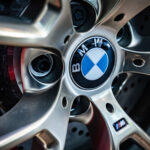Self-driving cars aren’t here yet, but Advanced Driver Assist Systems (ADAS) are widespread. These systems can independently warn drivers of potential risks, steer, brake and accelerate. Accident reconstruction experts can already see the influence of ADAS in the crash data downloaded from cars. They are changing the way accident reconstruction is done, and are becoming a focus of research.
What are ADAS?
ADAS can be divided into passive and active systems. Passive systems will warn a driver of a possible danger and leave it to the driver to steer or brake to avoid it. Active systems, on the other hand, will take control of the vehicle and actively steer, accelerate or brake if the driver does not.
Lane Departure Warning (LDW) and Forward Collision Warning (FCW) are passive systems, while Lane Keeping Assist (LKA), Adaptive Cruise Control (ACC), and Automatic Emergency Braking (AEB) are active.
Lane keeping systems are designed to prevent cars from drifting out of their lane. They are typically activated by the driver through a steering wheel button and are temporarily disengaged when the turn signal is used. They will either warn the driver of a lane departure (LDW), or actively redirect the vehicle by steering or applying the brake on one side (LKA). Because both systems rely on cameras to determine where the car is located relative to the visible lines painted on the road, neither will work on roads without lines, and both will disengage if heavy rain, snow or wear make the road lines impossible for the cameras to detect.
Adaptive Cruise Control is designed to maintain a safe following distance between vehicles. When engaged, ACC will maintain a set speed, and can slow down or accelerate with traffic according to a pre-set following distance or time. ACC controls speed through direct throttle and brake application; it relies on a camera and radar — which is less susceptible than the camera to the effects of rain, snow, or fog — to determine distance and relative speeds to objects ahead. Some ACC systems can bring the vehicle to a full stop.
Forward Collision Warning and Automatic Emergency Braking are designed to recognize impending collisions, alert the driver (FCW) and apply the brakes if the driver does not (AEB). These systems use a combination of cameras, radar and sometimes lidar — similar to radar, except using lasers instead of radio waves — to look ahead for obstacles.
ADAS cases
Crashes involving ADAS-equipped cars generate potential liability for manufacturers of cars and their ADAS technology. For these cases, it is crucial to identify what systems the vehicle is equipped with, and determine which ones had been enabled, turned on, or disabled by the driver at the time of the accident. Then, an assessment of the effectiveness of the ADAS will require an understanding of the crash circumstances and the system’s limitations.
A forensic engineering firm was recently asked why the driver assistance systems of a sports utility vehicle – in this case, the Automatic Emergency Braking and Adaptive Cruise Control – did not prevent it from rear-ending another car on the highway.
The answers were found in the electronic data downloaded from the crashed SUV. This particular model saved data about automatic emergency braking activations, including photographs from the forward-looking camera that the ADAS uses to see potential hazards. These images showed a car suddenly cutting in front of the SUV, braking and quickly slowing down. The data also showed that the AEB was active, did warn the driver and apply the brakes, but there was not enough time to prevent a crash. In this case, the functioning AEB was presented with an accident scenario that could not be avoided.
Let’s say now that a car runs a stop sign on a cross street and collides with another car: either driver could claim that their AEB systems should have prevented the crash, and that the ADAS manufacturer is in part liable for the accident. It was observed, however, that forward-facing cameras and radars detect vehicles later when they are approaching from the side. Because most AEB systems rely on these forward-facing instruments, it is likely that the vehicle in this scenario was detected too late for the AEB to avoid the collision.
Furthermore, recent tests of Toyota’s AEB system, published by the Society of Automotive Engineers, found that the system can sometimes turn off if the driver slightly lifts their foot from the accelerator pedal after the AEB warning sound, which could have also contributed to the crash.
When drivers have high expectations for an ADAS system, they can easily mistake a system limitation for a failure; an expert can separate assumptions from facts about the way the systems work, and the circumstances in which the systems won’t help.
Current research into ADAS limitations
Understanding the specific limitation of a system may require a detailed engineering analysis, as there are currently no government standards for the performance of ADAS. Some organizations, for example the Insurance Institute for Highway Safety (IIHS), have created a useful safety rating system for these new driver-assist technologies. However, these test results are not applicable to many accident scenarios.
The authors of this article were involved in the most recent research into ADAS systems – their tests of Toyota’s AEB systems were published by the Society of Automotive Engineers in 2018.
In a first series of tests, they drove several 2017 Toyota Corollas towards different car-like targets at speeds up to 40 km/h to see if the appearance of the target affected the system’s performance. It did not, which means that the system is robust within the range of conditions tested. However, they noted that if the driver lifted his or her foot slightly from the accelerator pedal after the AEB warning sounded, the system would sometimes turn off. This shows that is can be difficult for AEB to decide if and how to return vehicle control to the driver.
During tests at lower speed, they observed that the system worked well when the car approached the target over a long distance, reflecting the IIHS test results. However, for the same target speed, when they shortened the run-up and the car accelerated toward the barrier rather than coming in at a constant speed, the AEB did not engage consistently and the target was hit. To them, this highlights a potential shortcoming of the IIHS tests: in their tests, the Toyota AEB worked flawlessly, but the long run-up used (about 150 meters) allowed the car to approach the barrier at a constant speed, which is not representative of real-life traffic conditions. To consumers, this means that the AEB system might not be reliable at low speed, in stop-and-go traffic.
Changing accident reconstruction
In addition to generating new liability issues, ADAS are changing the way engineers reconstruct accidents altogether: testimony from a driver is no longer sufficient to form the basis for assumptions about pre-impact steering, braking and accelerating that affect speed calculation.
For example, an expert can determine if a car was traveling at the speed limit when it collided with a truck based on the amount of damage. If the driver of the car explains that he did not have time to react, the expert can assume that the speed of the car did not change before the crash, and that the approach speed was therefore equal to the impact speed. That was the case before ADAS. Now, crash data downloaded from the car can indicate that the car’s AEB system was active, and that it independently slowed the car significantly before the collision, which means that that the car actually approached the intersection at well over the speed limit.
There are still many gaps in the data accident investigators need to reconstruct crashes involving ADAS accurately. Science should begin filling those gaps sooner rather than later if experts want to stay on top of the technology. It is clear that ADAS is becoming more common, so a solid understanding of both ADAS functions and limitations is necessary to determine whether the manufacturer of the car or the systems are liable in an accident.
Today, the extraction and analysis of ADAS data by forensic engineers can produce a more accurate picture of a collision. In cases like the examples above, providing insurance companies with an analysis accounting for the ADAS data can tip the scale when it comes to assigning each party’s percentage of fault equitably.
Was this article valuable?
Here are more articles you may enjoy.

 Alibaba Teams up With BMW to Develop AI for Cars in China
Alibaba Teams up With BMW to Develop AI for Cars in China  Trump’s Tariffs Threaten to Endanger the Cheap American Car
Trump’s Tariffs Threaten to Endanger the Cheap American Car  Bankrupt 23andMe’s DNA Data Gets Sale Nod as Concerns Linger
Bankrupt 23andMe’s DNA Data Gets Sale Nod as Concerns Linger  US Weather Service Merges Units as Staffing Pressure Rises
US Weather Service Merges Units as Staffing Pressure Rises 